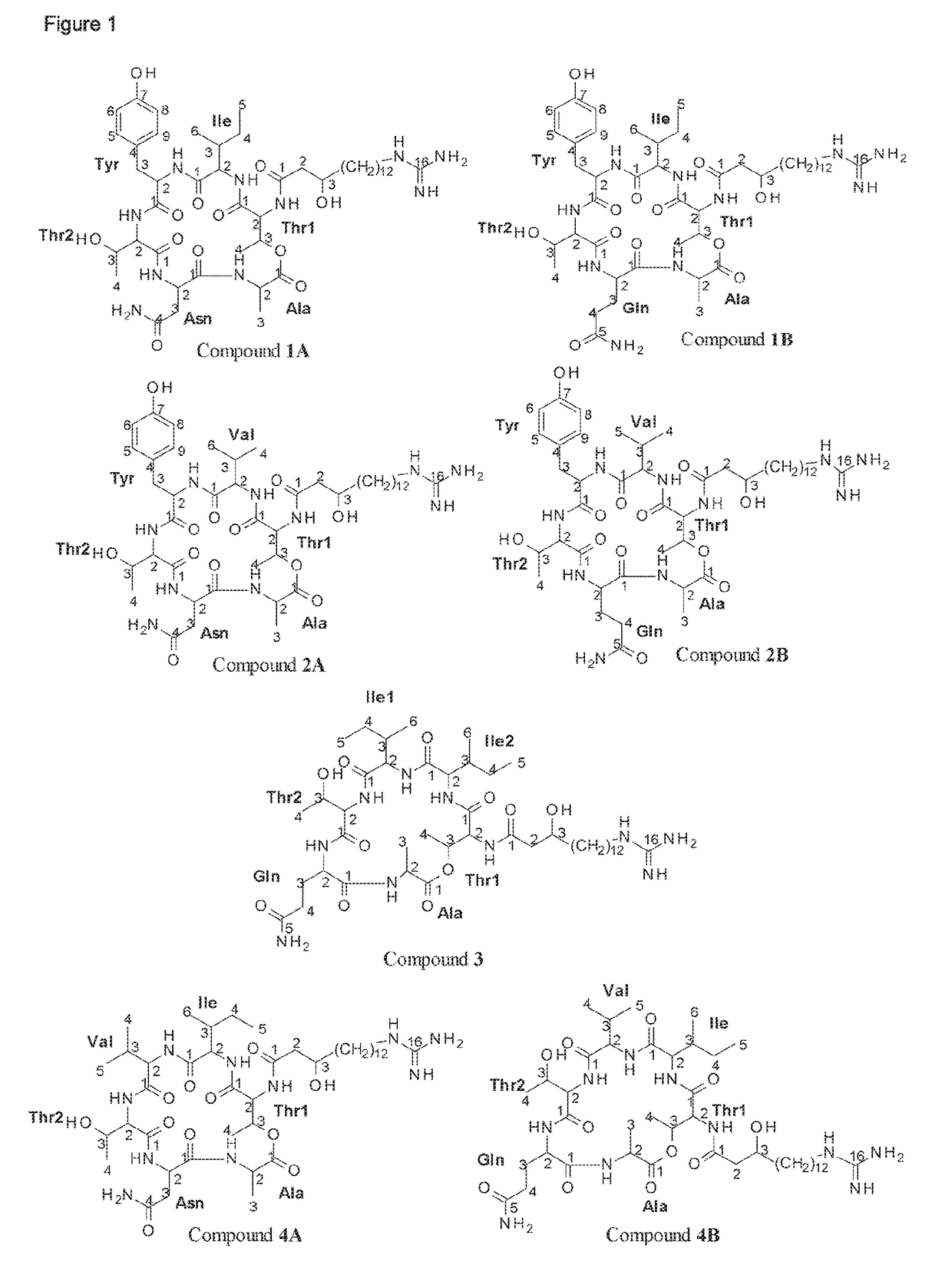Antifungal paenibacillus strains, fusaricidin-type compounds, and their use
a technology of fusaricidin and antifungal paenibacillus, which is applied in the field of new isolated bacterial strains, can solve the problems of variable efficacy and slow speed
- Summary
- Abstract
- Description
- Claims
- Application Information
AI Technical Summary
Benefits of technology
Problems solved by technology
Method used
Image
Examples
example 1
of Novel Bacterial Strains of the Invention
[0377]Soil samples from a variety of European locations including Germany were collected. By applying commonly known microbial isolation procedures to these soils, the inventors obtained a variety of bacteria that were further subjected to conventional isolation techniques for providing pure isolates as described herein.
[0378]Standard microbial enrichment technique (C. A. Reddy, T. J. Beveridge, J. A. Breznak, G. A. Marzluf, T. M. Schmidt, and L. R. Snyder (eds.). Methods for General and Molecular Microbiology, Am. Soc. Microbiol., Washington, D.C.) was followed to isolate each type of bacteria.
[0379]The following strains have been isolated and deposited under Budapest Treaty with the Deutsche Sammlung von Mikroorganismen und Zellkulturen (DSMZ) on Feb. 20, 2013:[0380]a) Lu16774 as deposited with DSMZ having the deposit number DSM 26969[0381]b) Lu17007 as deposited with DSMZ having the deposit number DSM 26970[0382]c) Lu17015 as deposited w...
example 2
ization of Novel Bacterial Strains
example 2.1
quencing
[0383]The 16S rRNA gene sequences of the Paenibacillus strains were determined by direct sequencing of PCR-amplified 16S rDNA at the DSMZ, Braunschweig, Germany.
[0384]Genomic DNA extraction was carried out using the MasterPure™ Gram Positive DNA Purification Kit from Epicentre Biotechnologies according to the manufacturer's instructions. PCR-mediated amplification of the 16S rDNA and purification of the PCR product was carried out as described previously (Int. J. Syst. Bacteriol. 46, 1088-1092, 1996). Purified PCR products were sequenced using the BigDye® Terminator v1.1 Cycle Sequencing Kit (Applied Biosystems) as directed in the manufacturer's protocol. Sequence reactions were electrophoresed using the 3500×L Genetic Analyzer from Applied Biosystems. Sequence ambiguities may be due to the existence of several cistrons encoding 16S rRNAs with different sequences within a single genome (J. Bacteriol. 178(19), 5636-5643, 1996).
[0385]The resulting sequence data from the strain...
PUM
 Login to View More
Login to View More Abstract
Description
Claims
Application Information
 Login to View More
Login to View More - R&D
- Intellectual Property
- Life Sciences
- Materials
- Tech Scout
- Unparalleled Data Quality
- Higher Quality Content
- 60% Fewer Hallucinations
Browse by: Latest US Patents, China's latest patents, Technical Efficacy Thesaurus, Application Domain, Technology Topic, Popular Technical Reports.
© 2025 PatSnap. All rights reserved.Legal|Privacy policy|Modern Slavery Act Transparency Statement|Sitemap|About US| Contact US: help@patsnap.com



